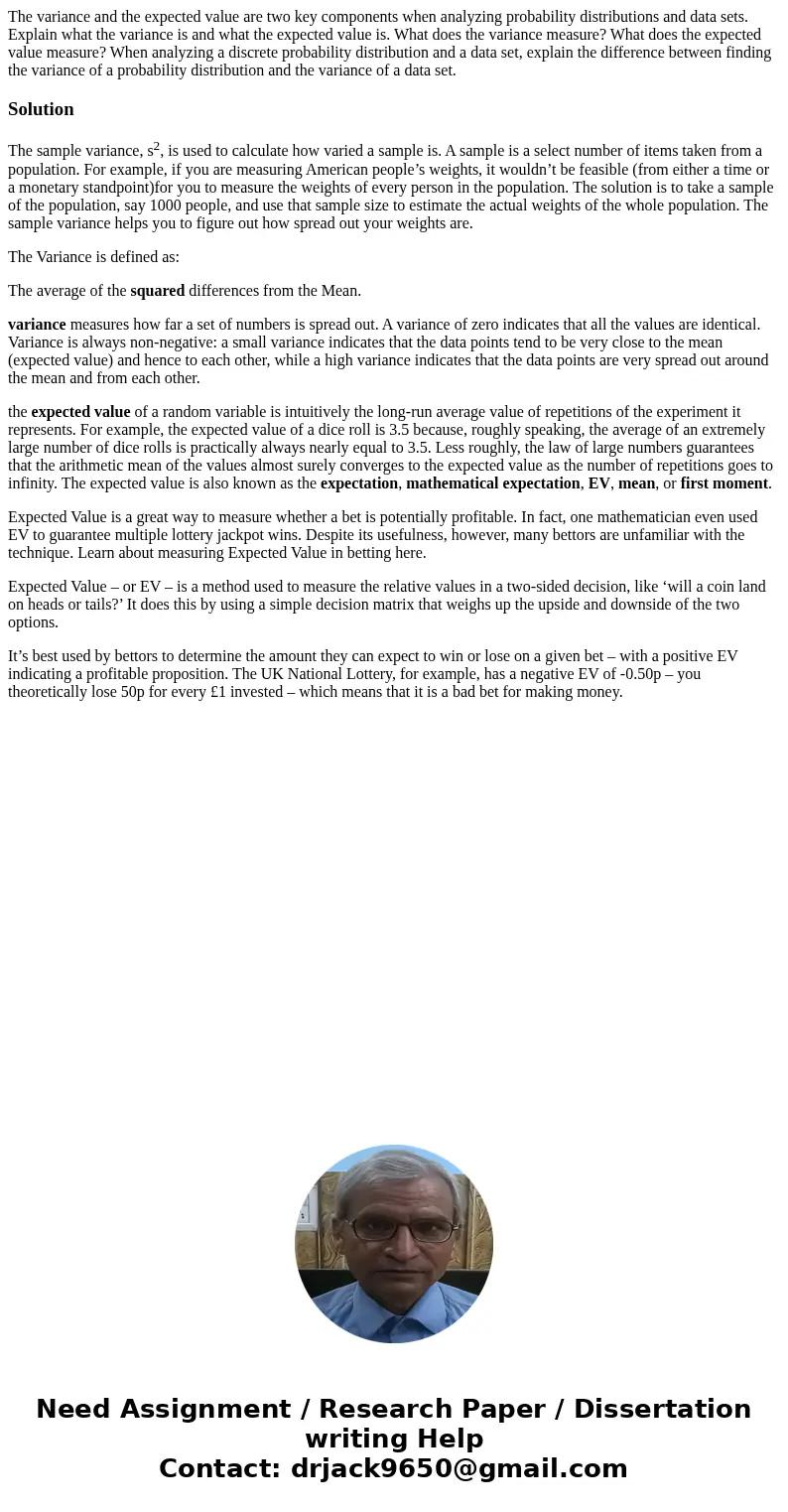The variance and the expected value are two key components w
The variance and the expected value are two key components when analyzing probability distributions and data sets. Explain what the variance is and what the expected value is. What does the variance measure? What does the expected value measure? When analyzing a discrete probability distribution and a data set, explain the difference between finding the variance of a probability distribution and the variance of a data set.
Solution
The sample variance, s2, is used to calculate how varied a sample is. A sample is a select number of items taken from a population. For example, if you are measuring American people’s weights, it wouldn’t be feasible (from either a time or a monetary standpoint)for you to measure the weights of every person in the population. The solution is to take a sample of the population, say 1000 people, and use that sample size to estimate the actual weights of the whole population. The sample variance helps you to figure out how spread out your weights are.
The Variance is defined as:
The average of the squared differences from the Mean.
variance measures how far a set of numbers is spread out. A variance of zero indicates that all the values are identical. Variance is always non-negative: a small variance indicates that the data points tend to be very close to the mean (expected value) and hence to each other, while a high variance indicates that the data points are very spread out around the mean and from each other.
the expected value of a random variable is intuitively the long-run average value of repetitions of the experiment it represents. For example, the expected value of a dice roll is 3.5 because, roughly speaking, the average of an extremely large number of dice rolls is practically always nearly equal to 3.5. Less roughly, the law of large numbers guarantees that the arithmetic mean of the values almost surely converges to the expected value as the number of repetitions goes to infinity. The expected value is also known as the expectation, mathematical expectation, EV, mean, or first moment.
Expected Value is a great way to measure whether a bet is potentially profitable. In fact, one mathematician even used EV to guarantee multiple lottery jackpot wins. Despite its usefulness, however, many bettors are unfamiliar with the technique. Learn about measuring Expected Value in betting here.
Expected Value – or EV – is a method used to measure the relative values in a two-sided decision, like ‘will a coin land on heads or tails?’ It does this by using a simple decision matrix that weighs up the upside and downside of the two options.
It’s best used by bettors to determine the amount they can expect to win or lose on a given bet – with a positive EV indicating a profitable proposition. The UK National Lottery, for example, has a negative EV of -0.50p – you theoretically lose 50p for every £1 invested – which means that it is a bad bet for making money.

 Homework Sourse
Homework Sourse